This product is no longer manufactured. Remaining stock may still be available. Please refer to the alternatives listed below under "Similar products" or contact us directly.
Alternative Products for this discontinued product:
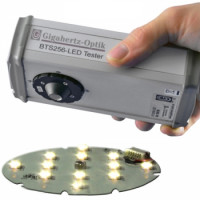
BTS256-HI
Compact Bi-Tec measurement device for the measurement of dental polymerization lamps and cold light sources. Features: Measurement window with implemented integrating sphere, spectral radiant power, color temperature, CRI, chromaticity coordinates, etc.
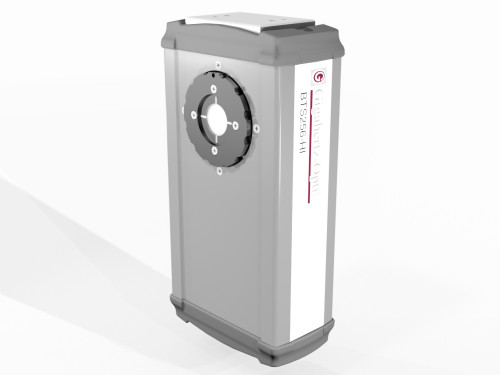
The BTS256-HI is a high-quality light meter for measurement of dental polymerization lamps and cold light sources
BiTec light sensor for complex light measurement
One of the characteristic properties of the mobile light meter is its BiTec light sensor. This combines the characteristic properties of a silicon photodiode with those of a low-noise CMOS diode array. The BiTec sensor guarantees precise photometric, spectral-radiometric and colorimetric measurement values over a large dynamic range through mutual correction of the measurement signals of both sensors.
Silicon photodiode detector, fast and linear
When taking into account the dynamic range, linearity and speed, silicon photodiodes have always been and are still the ultimate radiation detectors. A silicon photodiode is therefore incorporated in the BiTec light sensor of the BTS256-HI. Its precise matching to the photometric V(λ) CIE responsivity is also ideal for LEDs due to the integration of the diode array’s spectral measurement data.
Diode array detector for spectral measurement data
The low-noise CMOS diode array of the BiTec Light sensor provides precise measurement data required for the luminous spectrum. This data is then used for calculation of the color values as well as for optimization of the photometric responsivity.
Optimized Signal to Noise Ratio
The noise signal of a diode array detector has significant influence on the Signal to Noise Ratio and thereby affects the quality of the measurement signal. A remote controlled shutter in the BiTec light sensor enables online compensation of the dark signals that are dependent on the temperature and integration time.
Integrated integrating sphere
The integrating sphere of the BTS256-HI enables measurement of the radiant flux of 2Pi sources. Their light guides are directly placed on the 15cm diameter protective window for measurement.
Integrating sphere with protective window
For continuous, long-term use, a protective window protect the integrating sphere against contamination. The cone adapter with bayonet connector can easily be replaced if necessary.
Use with PC
The BTS256-HI has a USB 2.0 interface for use of the device with a PC. This enables both data exchange and battery charging.
User software
The S-BTS256 software included in the device’s price provides all the necessary functions for the measurements, measurement data display and data transfer. The cutting-edge, flexible desktop concept of the software offers the user an individual constellation of the required measurement values. This can be a full screen filled with lux measurement values or a matrix with both numerical and graphical fields. Each desktop constellation can easily be saved for future use.
Diverse photometric and colorimetric measurement quantities
A large span of measurement quantities is necessary for the verification and testing of LEDs. The BTS256-HI offers twelve measurement quantities and thereby meets all the requirements for a modern light meter:
- Φp luminous flux in lm
- Φe radiant power in W
- Φλ spectral radiant power
- x, y CIE 1931 color coordinates
- u‘, v‘ CIE 1976 color coordinates
- CT color temperature
- Δuv deviation from the blackbody locus
- λdom dominant wavelength
- λp peak intensity wavelength
- λ0,5 spectral half-width
- Purity color purity
- CRI Ra and R1 to R15 Color Rendering Index
Software Development Kit
Gigahertz-Optik offers programmers the S-SDK-BTS256 Software Development Tool. This can be used with LabView from National Instruments, .NET from Microsoft and C/C++. The SDKs simplify integration of the BTS256-LED Tester in an internally developed software.
Traceable calibration
The calibration is performed by Gigahertz-Optik’s calibration laboratory for photometric measurands. The calibration is done using calibration standards traceable to national and international standards. Recalibration is recommended after every 12 months.
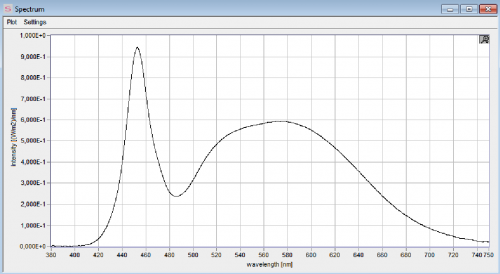
Full screen display of the luminous spectrum
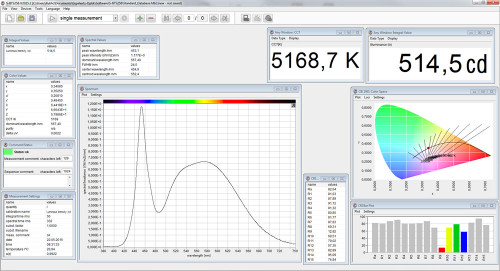
S-BTS256 user software with modular desktop setup
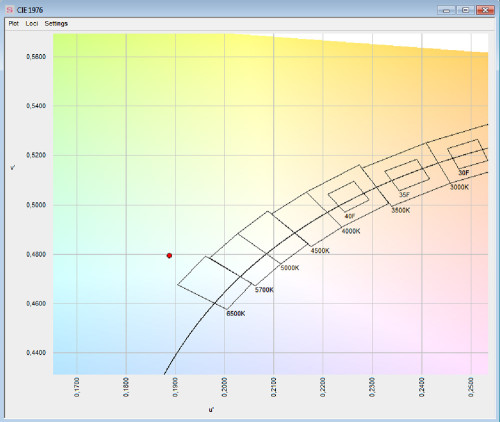
CIE 1976 chromaticity table with binning fields
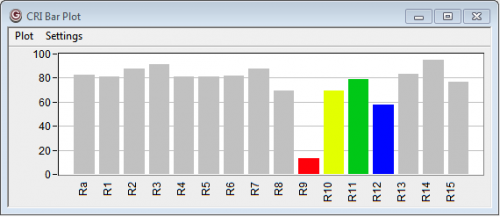
CRI Bar Plot
Similar Products
Product Categories